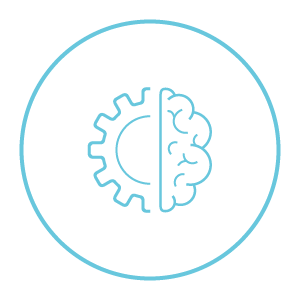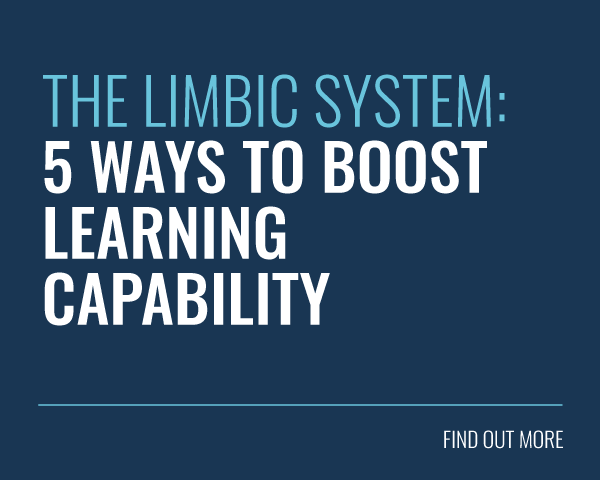
Have you ever wondered what your brain does at work? Lucky you, Art Markman has the answer to our deepest cognitive science questions!
His book, ‘Bring Your Brain to Work’ lets you in on the brains thought patterns during our working lives.
Art’s extensive research in cognitive science lets us know how to get our dream job, how to excel at work and how to find your next position.
As big advocates of cognitive science and the learning journey, we presented Art with a collection of questions for your reading pleasure…
How did you get into cognitive science?
I went to college in the 1980s and thought I wanted to study either economics or physics. I took a few economics courses and didn’t love them, and I took a physics class, and it didn’t like me.
Over time, I realised the courses I enjoyed (computer science, psychology, linguistics, anthropology, and philosophy) were all tied together through the discipline of cognitive science. I ultimately got a PhD in psychology, because computers in the 1980s weren’t really up to the task of intelligent behaviour.
I have stayed active in the field, serving as an executive officer for the cognitive science society for 3 years and editor of the society’s flagship journal Cognitive Science for 9 years.
What inspired you to write ‘Bring your Brain to Work’?
About 12 years ago, I started doing more work to bring insights from my field to a broader audience. That began a blog for Psychology Today as well as talks for companies and civic groups. About 6 years ago, I was asked to write a weekly column for the Fast Company website.
I asked them to send me ideas for columns, and most of them were topics related to navigating career success from getting a job, to performing well to moving on to the next job. That led to Bring Your Brain to Work (which is the only book I have written whose title survived from the proposal all the way to the final product).
What effect do the motivational brain, social brain and cognitive brain have on an employee’s engagement with training?

I divide the book into three “brains,” which are really psychological systems that govern behaviour. I call these the “motivational,” “social,” and “cognitive” brains. These systems have an impact on every aspect of career success. Let’s focus on training.
In order to want to learn new things, employees need to be motivated to recognize what they don’t know. They need to find the gaps between what they are able to do given their current knowledge and what they would be able to do if they learned more. Recognizing gaps is crucial for giving motivational energy to any goal.
Unfortunately, one social and one cognitive factor stand in the way of this motivation. On the social side, many people suffer from “imposter syndrome” in which they believe they are unqualified for the position they have been hired into. As a result, they are fearful that others will discover they are not fit for their job.
In order to cover for this fear, many employees will not admit things they don’t know, and as a result will not be motivated to fill the gaps in their knowledge. People need to recognize that they will never be fully ready for any position they take on and that learning is a crucial part of success. Leaders need to demonstrate that they are continuously learning in order to help employees recognize that they also need to admit what they don’t know.
On the cognitive side, many people have what Frank Keil and Leonid Rozenblit called an “Illusion of Explanatory Depth.” They believe they understand the world better than they do. As a result, even if people are willing to admit gaps in their knowledge, they probably have more gaps than they think they do.
In order for people to recognize the limits of their knowledge, they have to develop the habit to explain things to themselves. When generating these explanations, people will often discover that information they thought they really understood is missing. Those gaps in their knowledge are invitations to learn more.
Companies also need to provide employees with time to learn. Most organizations are so focused on tasks that need to be done right now that they don’t provide regular time each week for employees to build knowledge for the future. People need to have some time built into their regular schedule to read new articles or attend lectures. It is wonderful to have the occasional training class or to give someone a day or two a year to attend classes, but they also need a few hours in their weekly schedule to learn things that will turn out to be useful for future projects.
In your book, you talk about expert generalists. How can L&D teams foster an environment that encourages these expert generalists to explore their potential?
Expert generalists are people who are naturally curious. They are high in a personality characteristic called “openness to experience,” so that they find new ideas intriguing. In addition, they are high in another characteristic called “need for cognition,” which means that they like to think deeply about ideas. This combination leads people to explore topics in depth–even when they are not sure why this information will be important.
Companies can encourage expert generalists by providing them with time to continue learning as well as opportunities to engage with people across the organization to find out what they are working on. Expert generalists are often able to find parallels between what people in different groups within the organization are doing. In this way, they can help to break down silo walls and allow everyone’s expertise in an organization to affect ongoing projects.
Do you see a role for technologies in helping create a ‘neighbourhood’ culture?

The anthropologist Alan Fiske highlighted the various kinds of relationships people engage in their lives. The three most prominent can be labelled “family,” neighbours,” and “strangers.”
Neighbour relationships are particularly important in the workplace. Neighbours are people who trust each other, because they engage together frequently. As a result, they settle up their debts to each other in the long run rather than immediately.
In organizations that are distributed in space, it is crucial for employees to have time to engage with each other to develop those trusted relationships. Unfortunately, communication mediated by text (like emails, instant messages or message boards like Slack) make it hard for people to feel close to each other.
So, companies need to provide other opportunities for their employees to experience “co-presence” in which they feel like they are in the same place at the same time. Video conference tools can help give people a sense that they are having a good conversation. That requires an investment both in a good internet backbone to support real-time video as well as cameras and software that enable both small-group discussions as well as larger meetings.
That said, there is still no substitute to getting people together for periodic meetings. Offsite retreats can help distributed groups to develop better relationships.
What strategies do you think organisations should implement to improve motivation outside of financial incentives?
Engaged employees are motivated employees. One of the central determinants of motivation is whether people believe that they are engaged in a mission that is bigger than themselves. That enables employees to think of their work as a calling.
Organisations can help facilitate this mindset by reminding employees of the good things that the company does for the world. It is not enough just to let people know that they have done their own job well, because most people are doing jobs that are just one small piece in a larger system that the organization serves. The firm needs to highlight the ways in which it makes the world a better place.
In addition, employees need to feel like the organization shares their values. In yearly HR evaluations, employees should be encouraged to talk about any frustrations they may have related to how the mission of the organization relates to their own hopes and dreams for the future. Supervisors should work with their direct reports to explore ways that the organization can better align with that employees’ values in order to foster that sense of common mission.
How do you see technology playing a part in employees’ development?

There is a lot of great information out there for people to engage with that can enhance their knowledge and skills. When firms give their employees a chance to engage with on-line lectures and tutorials, they are sending a message that development is an important part of career success.
Employees who routinely engage with these tools should be publicly acknowledged in order to motivate other people to follow their lead.
In addition, everyone needs good mentoring. Employees should be encouraged to reach out and set up in-person or virtual meetings with other people in the company who can teach them new things. Technology can be a great way to create mentoring networks throughout a large and distributed company.
Leaders can promote this kind of mentoring by engaging in reverse mentoring with new employees. Leaders should find new employees with key skills and connect with them to have those new employees teach the leader something new. That activity sends the message that everyone–top-to-bottom–is expected to reach out to others to share knowledge and expertise.
Final Words
We hope you enjoyed these insightful answers provided by Art as much we did. The man is simply a neuroscience hero with immense experience on cognitive science.
Download our guide ‘Behaviour Change in the Workplace’ and see how the power of neuroscience can benefit your workplace!
Unlimited Learner Engagement on
The Impact Suite









